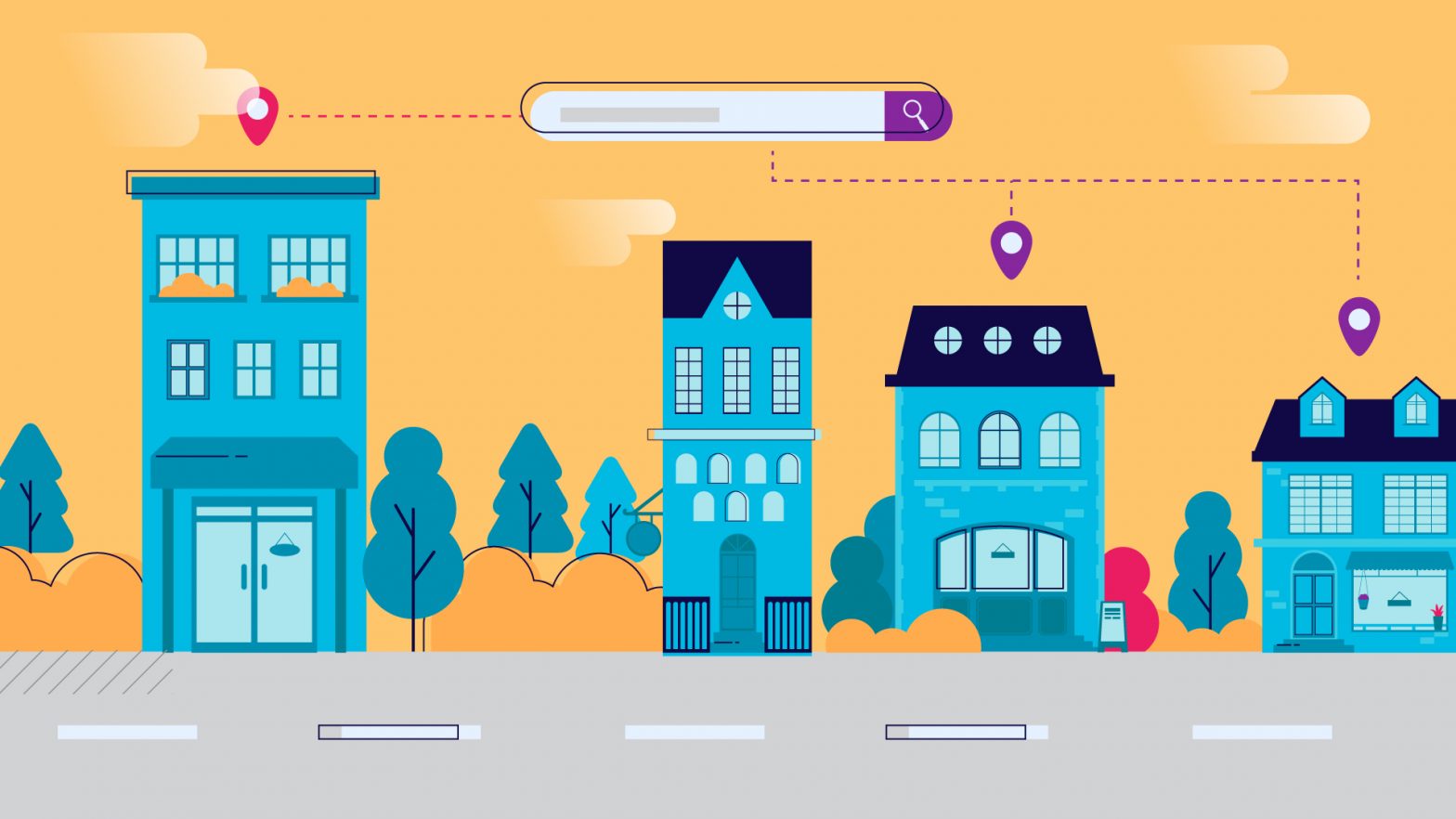Today’s customers have significantly more options when it comes to choosing brands they want to purchase from. They make decisions largely relying on trust — 44% say they will spend at least $500 or more on brands they trust most.
However, It’s not easy to convince people who have never met you or seen your product in person that they should purchase from you.
Given that your website is usually the first point of contact between your customers and your company, it has to convey a sense of credibility and make a great first impression.
But how do you achieve that?
Through impeccable web design.
Although 94% of people judge a website almost entirely based on its aesthetic appeal, there are other elements to consider if you want to engage your audience and get them to stick around longer.
Here are some of the best practices for building customer trust with web design.
1. Leverage the Power of White Space
Also known as negative space, the area between other design elements matters almost as much as the content, images, or calls to action on your pages.
Frequently neglected and underestimated, negative space is a powerful UX design tool. It has a very positive impact on how visitors perceive your site through website marketing tactics, thereby helping you build trust in them.
It allows your design to breathe. If you’re worried that using so much white can be monotonous or that it’s a waste of valuable real estate on your web page, don’t be. Negative space can be any color, pattern, or even texture.
Some benefits of using white space are:
- Improving readability. The right amount of white space between different design elements, including line and letter spacing, makes it easier for your audience to read your content.
This can reduce your bounce rates and boost engagement since almost 40% of people don’t interact with a website whose layout and content are unattractive.
And who could blame them? It’s only logical to conclude that easy-to-read websites are more trustworthy. - Drawing your visitors’ attention to crucial website elements, such as calls to action, certain keywords, or critical information.
As a result, you can eliminate distractions, point your audience in the right direction, and encourage them to take action. While drawing your visitors’ attention to crucial website elements is paramount, sometimes the platform hosting your website can impose limitations. This is where strategies like webflow migrations become relevant. It’s not about promoting a particular platform, but rather recognizing the need for flexibility and growth. - Creating a sleek, professional look. The clutter-free and well-organized layout gives your website a professional look, which will help you build trust and allow you to reinforce your brand tone.
One thing to be careful about is not using too much negative space. If you overdo it, your website might look empty or unfinished. Setting the right balance is critical.
Example
Going’s cheap flights’ page is a great example of this approach, as they use negative space to create a simple yet elegant layout and get their main message through effectively.
The brand avoids clutter and distractions, thus allowing customers to understand what the core functionality of the website is — finding cheap flights with no hassle.
The call to action is highly visible, thanks to using a vibrant green color that stands out against the background.
2. Double Down on Social Proof
People are social creatures, and we strive to be accepted by others. That’s the reason why we’re wired to take a cue from the people around us and copy their actions. And it’s also why social proof is such a powerful marketing and web design tool.
According to this psychological concept, people’s decision-making is heavily influenced by their peers.
Apart from helping us conform to and stay within societal norms, social proof is what we use when we’re unsure what to do and how to act in a particular situation — when we don’t know what’s right and what’s not.
Let’s say you want to grab a bite in a city you’ve never visited before and have no idea where the food is good.
You’ll most likely choose a restaurant that’s crowded over a suspiciously empty one. Or, you’ll check online reviews and find a place with a five-star rating.
Given that 70% of customers trust recommendations from people they don’t know, it’s obvious that showcasing different kinds of social proof on your website is a tactic that can go a long way toward building trust with your audience. Y
our existing customers’ opinions about the quality of your product or service will convince first-time buyers that your company is legit and trustworthy.
Include as many examples of social proof on your site as possible, and some of them can be:
Testimonials
This type of social proof is basically user-generated content since it’s about your happy customers sharing their experiences with your brand and demonstrating the value or service.
Client logos
By displaying the logos of well-known clients or partners, you can add another layer of credibility to your brand.
Social media
It’s a good idea to use a plug-in and embed your social media feed on your website so that website visitors can see posts in which your existing customers are seen enjoying your products.
This will give them the confidence to purchase from you and boost engagement.
User reviews and ratings
Good ratings and reviews where people praise your products or services can influence purchasing decisions and reassure potential buyers about the quality of the overall experience with your brand.
Earned media
Whenever your brand receives positive publicity through third-party sources, such as getting referenced in reputable media articles, TV shows, or podcasts, make sure to showcase these mentions on your website by including links, embedding videos, or displaying logos of outlets your company was featured in.
Earned media will boost your brand awareness and vouch for your credibility.
Trust badges and seals
Adding trust badges and seals to your website is a powerful way for you to build credibility and address any potential concerns your customers may have. These visual indicators assure visitors that your site is secure, legitimate, and compliant with industry standards.
By displaying trust badges, such as SSL certificates that signal your site is safe and encrypts data, or payment badges from recognized providers like Visa, MasterCard, or PayPal, you can demonstrate that you take security seriously and use reputable payment methods.
Strategically place these badges on product pages, in the footer of your website, and especially during the checkout process to maximize their impact and encourage more sales.
Example
Vivion prominently displays quotes from testimonials on its homepage and lets happy customers do the talking, which is much more convincing and genuine than brand messaging.
The company uses a slider widget to organize these quotes without cluttering the page and overwhelming visitors.
Dress Forms USA uses every opportunity to impress potential customers. Their homepage features a floating Reviews tab, well-known customer logos, and a best-seller section with star ratings.
The brand goes out of its way to make social proof easily accessible and show why existing customers love them.
In the “Shop the Look” section on its homepage, Cluse displays a carousel of customers’ Instagram posts in which they’re seen sporting the brand’s watches, bags, or other accessories.
It’s a very clever tactic for getting customers involved in their marketing efforts and increasing engagement. With such high-quality UGC, Cluse manages to instill trust even in those who encounter their products for the first time.
Source: Cluse
3. Embrace Video
Capable of conveying a wealth of information in just seconds and communicating with your audience in a more personal, engaging way, video is an extremely effective tool for building trust.
Written content is devoid of prosodic features and body language, which makes it difficult for people to interpret its tone and emotion.
That’s where video comes in, as it allows you to display a full range of emotions using verbal, auditory, and visual cues. All this helps you to build rapport with your audience and communicate your message more clearly and persuasively.
Additionally, video is great when it comes to explaining complex concepts or ideas, demonstrating product functionality and value, and humanizing your brand.
No wonder 96% of people use this format to learn more about a product or service.
Example
SellerPlex leverages video on its homepage to tell the brand story and put a face to the name.
Watching the company’s founder Nate Ginsburg talk about why and how he decided to start Sellerplex comes across as genuine and relatable, especially to the brand’s audience, which consists of business owners and entrepreneurs.
His words hit home and produce an effect that can hardly be achieved through an article, no matter how compellingly written.
Source: Sellerplex
4. Add Value with Interactive Content
Interactive content is engaging and fun, but the element that makes it a must-have on every trustworthy website is the value it adds to potential customers.
Unlike static content, its interactive counterpart requires readers to be active participants rather than passive recipients of your marketing messaging. That’s the reason why interactive content gets almost 53% more engagement.
By encouraging the audience to interact with your web design brief and provide input, this kind of content offers them highly personalized information, answers to their questions, and solutions to their pain points.
Let’s take a quiz or test, for example, and compare it with a traditional blog post. The former prompts the audience to click, answer questions, or choose an option, all of which makes it significantly more educational and engaging than the latter.
Plus, this interactivity makes learning new things more memorable, not only because it’s entertaining but because users are actively involved in the process.
So, interactive content is an excellent medium for educating your audience as well as offering them valuable insights and solutions quickly.
Depending on your niche, you could use various options to add interactive elements. For example, many interior design blogs now offer interactive tools, like room-style quizzes or color palette generators, to engage readers and offer personalized suggestions.
These tools not only keep readers engaged but also provide them with tailored ideas that encourage them to explore more content or services.
Some of the most popular examples of interactive content include quizzes, tests, calculators, tools, surveys, polls, infographics, and games.
Example
MarketBeat’s calculator tool for dividends helps the company’s audience to build their dividend stock portfolio by allowing them to learn how much income it will generate over time.
They can select among different parameters and get accurate and detailed information in seconds, something that would otherwise take much more time and require a certain level of expertise.
Source: MarketBeat
Estée Lauder leverages a similar approach with their Find a Custom Skincare Routine quiz. Many people aren’t sure how to pick the right product for their skin type, especially if they have some kind of dermatological problem.
Going through endless lists of different products isn’t a solution, while an interactive test can be a great way to help them identify the right cleanser, cream, or serum depending on the skin concern they want to address.
Source: Estée Lauder
5. Improve Your Website Usability
Driving high-quality traffic to your website is a challenging feat, but once you do, it’s crucial to get them to stick around for as long as possible and convert.
To achieve this goal, your navigation has to be intuitive and user-friendly.
Poor website usability means your visitors can’t easily find what they’re looking for or switch between different web pages. If this happens, they will get frustrated and bounce off.
According to a frequently disputed “three-click rule,” a website user should be able to navigate to any page with no more than three clicks.
Even though this claim has been debunked as incorrect, the truth is that your navigation should be as simple as possible.
Here are some best practices you can implement:
- Place your navigation bar where users expect to find it. Don’t try to reinvent the wheel when it comes to this design element. The most common places include the header, sidebar, and footer.
- Make your logo clickable and link it to the homepage. This way, visitors will be able to find their way back without having to click back and forth, no matter how deep into the website they get.
- Create meaningful navigation labels so that people understand where clicking on each tab will take them.
- Organize your content properly so that it’s easy to scan.
- Add a search bar to every page and make it visible. Don’t make your prospects work to find a blog post or product they’re interested in, and with a search bar, this process will last no more than a couple of seconds.
- Make sure your website is optimized for mobile so that people can explore it on their mobile devices. Given that almost 60% of global website traffic comes from mobile devices, you can lose a significant share of your audience if they have to pinch and zoom in order to navigate your site.
- Simplify your online forms and checkout to minimize friction and make it easier for your visitors to subscribe to your newsletter or make a purchase.
All these details have a huge impact on how your customers perceive and interact with your website and are a make-it-or-break-it factor when it comes to building trust with them.
In other words, the better your user experience is, the more credible your website will be.
Example
The Startup Resources website is packed with web design blog topics, articles, news, and other curated content for entrepreneurs and business owners.
And yet, it’s easy to navigate because there are multiple UX tools that allow visitors to find the content they need.
All resources are organized into different categories, easily accessible by clicking on the corresponding tab.
There’s also a search bar conveniently placed above the fold and accessible from every web page.
Source: Startup Resources
Evernote is an example of a brand that got its mobile website design right. It’s clear, user-friendly, and well-organized.
Even the blog is easy to navigate since posts are organized in the form of large thumbnails. There’s a search bar with the option to select different categories and topics for more refined filtering.
Source: Evernote
In Closing
Building customer trust with web design isn’t a one-time thing but a continuous effort. It’s a combination of visual appeal and usability, as both aspects affect your audience’s opinion
By following the best practices we discussed in this article, you’ll be able to create a site that not only looks awesome and is easy to use but also communicates brand values, showcases your credibility, and inspires confidence in your visitors.
Author: Natasha Lane








